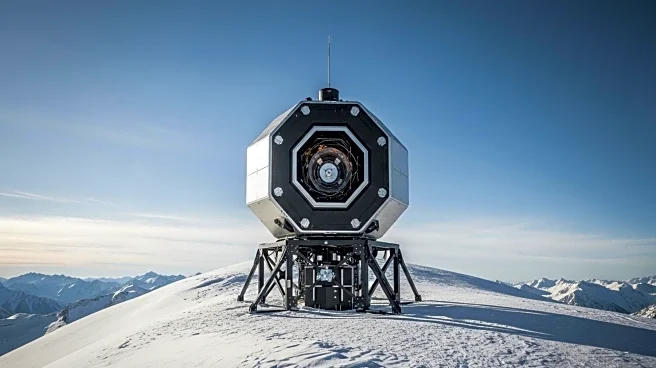What's Happening?
Researchers at King's College London have developed an extremely small thermodynamic engine that reaches unprecedented efficiencies, potentially mimicking nature's tiniest machines. The engine uses a microscopic glass bead as the working fluid, which is levitated in a chamber with an electric field. This setup allows the bead to behave as if its temperature rises to 10 million Kelvin, despite being cool to touch. The engine exhibits unusual behaviors, such as achieving seemingly impossible efficiencies and sometimes operating like a refrigerator. These phenomena are attributed to the engine's minuscule size, where even a single air particle can significantly alter its function.
Why It's Important?
The development of this microscopic engine is significant for understanding the laws of physics at a small scale, which can differ from traditional expectations. It offers insights into the thermodynamic behaviors of biological systems, such as cells and proteins, which operate under similar conditions. This research could lead to advancements in the study of natural systems and contribute to the development of new technologies that harness these unique properties. The engine's ability to demonstrate extreme thermodynamic behaviors provides a simplified model for testing theories related to biological processes.
What's Next?
The research team plans to use the engine to model energy changes in proteins during folding, which could validate existing theories about biological systems. This approach may lead to a deeper understanding of how microscopic components function, potentially influencing future technological applications. The engine's design allows for exploration of various properties of the microscopic world, which could pave the way for new scientific discoveries and innovations.
Beyond the Headlines
The engine's ability to operate in unexpected ways highlights the complexity and unpredictability of microscopic physics. This research underscores the importance of studying systems at a small scale to uncover behaviors that are not apparent in larger systems. The findings may challenge existing assumptions about thermodynamics and inspire new approaches to studying and utilizing microscopic phenomena.











